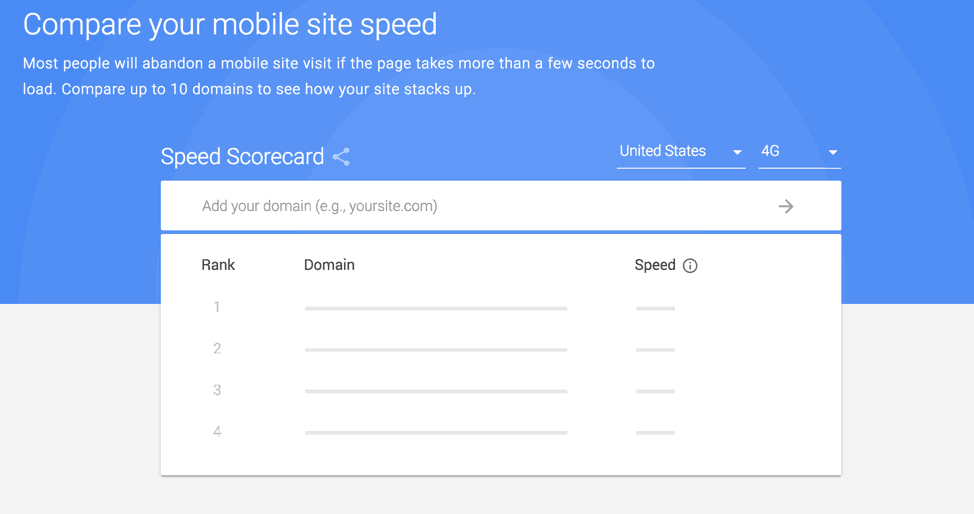What You Need to Know: 2018’s Google Mobile Speed Scorecard

Since Google’s April 2015 announcement that mobile-friendliness would play into SEO rankings (aka, “Mobilegeddon”), mobile optimization has been top-of-mind for marketers, advertisers, and site owners. While SEO is ever-changing, the importance of effective mobile marketing is not. The advent and growth of smartphones and tablets, in conjunction with Google’s guidelines, has made everything mobile extremely important.
Whether you are focused on your site’s Search Engine Optimization, user experience, or conversions, there are several factors to consider as you focus on improving your mobile presence.
Important Mobile Factors
You may have built a separate mobile website or gone for an overall responsive web presence (this is the better option). Either way, there are a number of issues to consider when analyzing and improving mobile success factors like user experience, sales and Google indexing/ranking.
The key thing to remember is that you are trying to capture an audience that is looking for something specific, very quickly. This is certainly different from your goals with a desktop audience, which might have more time (and attention) to spend on your website.
Some questions to ask yourself about your mobile site include:
Is my mobile user experience truly tailored to on-the-go users?
- Is your contact information at the top of the site (“above the fold”)?
- Is there an easy way for users to reach out to your business (an easily accessible button that stands out, for instance)?
- Is there localized information available, should searchers need it? Address information, directions, etc.
- Is there enough information about your company or service, but not too much so that users need to endlessly scroll to find what they are looking for?
Is my website optimized for a mobile browsing experience?
- Is my site fully functional on a cell phone or tablet?
- Is everything on the mobile site viewable? (For instance, you don’t use Flash as many users do not have it on their devices.)
- Is my site optimized for both Android and iOS operating systems?
Is my mobile site speed up to par?
Are you losing conversions because of slow load times? This is especially important because you are tailoring to devices where speed matters most.
Issues with any of these factors can impact not only your presence in Google, but also the browsing experiences of your customers and potential customers (and therefore, ultimately, conversions). UX design is important, as is content and browser optimization – but none are quite as significant and impactful on your bottom line as site speed.
Improving Mobile Site Speed
Google has prioritized faster and more relevant digital experiences in an effort to keep up with consumer expectations. In fact, the search engine cites recent data on this topic, revealing that more than half of all visits to a mobile site are abandoned if that site takes more than three seconds to load. Google goes on to note:
“When it comes to mobile speed, we recommend that a site loads and becomes usable within five seconds on mid-range mobile devices with 3G connections and within three seconds on 4G connections. But there’s a lot to gain by taking small steps to improve your site speed – even a one second improvement could increase conversions.”
Mobile site speed, therefore, is also critical for the success of your paid search campaigns. You don’t want to spend money on clicks and impressions just to have your conversions negatively impacted by a technical factor like site speed.
Where to Start
In February 2018, Google introduced a Mobile Speed Scorecard that allows you to better understand how your site’s mobile speed stacks up against the competition. Obviously, you should shoot for under three seconds of load time, but this scorecard allows you to better understand just how much you need to improve to keep up with or surpass competitors.

The Google Mobile Speed Scorecard
With the Mobile Speed Scorecard you will also find the Impact Calculator. This can give you a better idea of how your revenue could improve if you work on your mobile site speed. This could be helpful if you need to convince other individuals on your team to devote time to this endeavor, or it could be the ammo you need to motivate your development team to work a little harder on your mobile site.
What to Fix
As for beginning the process of improving your site speed, begin with these rules from Google PageSpeed Insights:
- Reduce any redirects to mobile landing pages.
- Allow compression.
- Remove unnecessary data by minifying resources.
- Optimize your images for mobile delivery by reducing their file size.
- Ensure server response time is under 200 milliseconds.
- Use browser caching.
- Optimize CSS delivery for mobile.
- Reduce the size of your data, especially for above-the-fold content.
- Don’t use blocking Javascript.
If you can use this information to improve your mobile site’s speed, you can be well on your way to increased conversions, better Google rankings, and happier customers.
Recent Posts
You’ve heard it here, you’ve heard it there, you’ve heard it from any SEO agency:…
Every month, our SEO team looks back on the previous months to determine wins, losses,…















